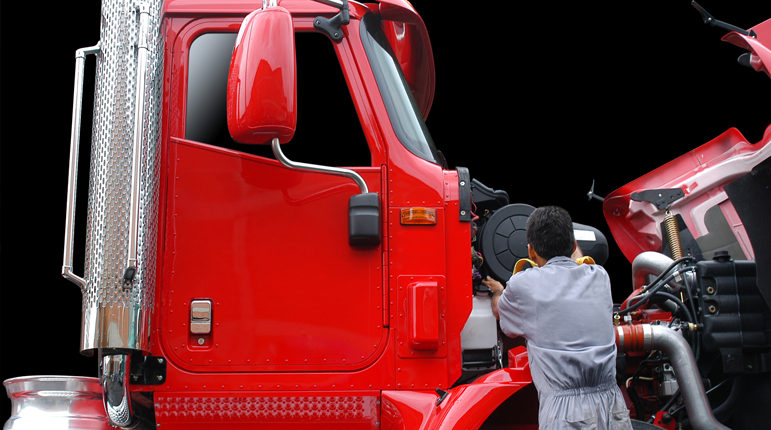Staying safe on the road starts with taking care of yourself; getting enough rest, eating right, and getting some exercise so you can perform at your best. But equipment maintenance is a VERY close second. When the jobs are fast and furious, it can be easy to overlook the checks and balances that keep your gear humming and working at peak efficiency. Don’t wait to “get around to it,” make it part of your regular schedule.
Here are a few maintenance best practices to ensure that life on the road keeps running as smoothly as possible:
1. Replace Air Dryer Cartridge: Annually
Keep tractors and air systems decontaminated from debris and moisture. Moisture can cause brakes and other air-driven components to freeze up in colder climates. You might also consider purging the valve on the air dryer systems annually as well.
2. Drain Tractor Air Tanks: Every Other Day
All tanks have a drain-pull or valve. Some moisture will inevitably make it through the dryer system and collect in the tractor air tanks. To mitigate problems associated with this, drain the tanks every other day as a matter of course.
3. Battery Replacement: Biennially (Every Two Years)
Over the road, highway driving fleets should replace batteries every two years. Metal plates break down inside the batteries from rough roads. Compound that with batteries being called upon to maintain hotel loads during sleeper times, and the strain becomes clear. This drain-and-recharge cycle over time breaks down battery components and as viscosities of oil as the seasons change, startups put higher stress on the batteries. Check electrical connections for corrosion as well.
4. Tire Pressures: Seasonally
Tires lose several pounds of pressure during the transition from cooler weather to summer. Tires that took 100 pounds of air in the summer come up 15-20 pounds lower in colder temps. These changes affect fuel mileage and wear. Check tire pressures frequently but, at the very least, with each change of season.
5. Fuel & Coolant Additives: Seasonally
All Major truck stops use additives in their fuel blends to prevent “Gel-Ups” in colder temps. When dealing with extremes below 20º and higher windy conditions, fuel additives are beneficial. But keep in mind that It’s crucial to follow the instructions on additive bottles. Too much can cause problems instead of providing benefits. The right mix of coolant (50/50 water/coolant) is equally important. Chemicals in coolants help prevent piston liner cavitation and additives such as Pencool or NalCool are popular at truck stops to get the right balance. Use test strips to check levels with each change of season.
Want to know more?
To learn more about Safeway Logistics and opportunities for drivers, call us at 317-545-7533 Monday through Friday 7 a.m. to 6 p.m. ET, or apply online now!

